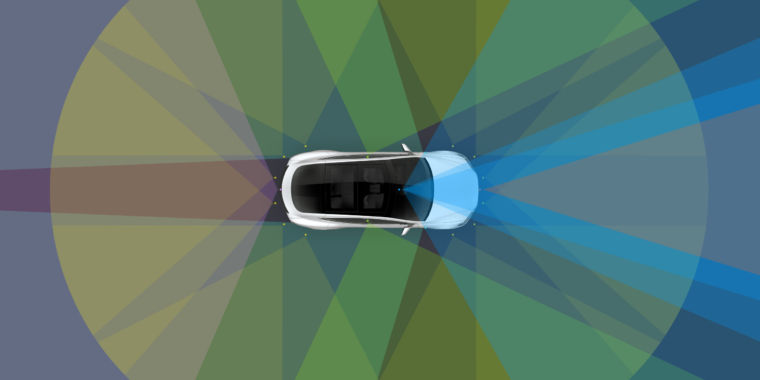Altes
Member
All tesla dealers and service centers will be serving free beer tommorrow alsoHa.ha.ha. Had me for a second. I don’t have social media so I cannot keep up to date with every post about this stuff.
You can install our site as a web app on your iOS device by utilizing the Add to Home Screen feature in Safari. Please see this thread for more details on this.
Note: This feature may not be available in some browsers.
All tesla dealers and service centers will be serving free beer tommorrow alsoHa.ha.ha. Had me for a second. I don’t have social media so I cannot keep up to date with every post about this stuff.
Only for people with FSD though, so you don't DUI.All tesla dealers and service centers will be serving free beer tommorrow also
You mean Elon won’t send a robotaxi to ensure I get home ok?Only for people with FSD though, so you don't DUI.
FSD 9 really seems to achieve this at alpha quality.This was the original description of FSD.
View attachment 684431
Who thought it was impossible? Google built cars with similar capabilities a decade ago.But they clearly built a thing that didn't exist before and many thought was impossible
Auto destination also exists at some basic level, it will automatically set the destination to home or work, or an upcoming calendar event. I assume that worked in the FSD beta since it just sets the nav destination for you.FSD 9 really seems to achieve this at alpha quality.
> [ ] if you don't say anything, the car will [figure it out]
> [X] your Tesla will figure out the optimal route
> [X] navigate urban streets (even without lane markings)
> [X] manage complex intersections with traffic lights, stop signs, and roundabouts
> [X] and handle densely packed highways with cars moving at high speed
> [ ] step out at the entrance and your car will enter park seek mode
> [X] summon
So we're missing the park seek mode and auto destination. The rest of the features exist at a level (I think) that proves that they're possible, just not working very well yet.
I don't think FSD is fraudulent. Cars exist that do the things it says it would be able to do. Is the foundation of V9 robust enough to cover the amount of work necessary to bring the current feature set to a level of adaquete safety? I guess that's the question.
I think it is with a hardware update (with potentially more sensors) and another 6-12 months. But I'll admit that I'm new to this game, having only purchased a Model Y a few weeks ago. If I had purchased a Model 3 years ago, I probably would have thought that all they needed was a little more HW and a little more time too, and have been wrong.
So I respect the frustration of the people who have already been around the block. I probably wouldn't be very impressed with FSD 9 had I been watching since the beginning.
But they clearly built a thing that didn't exist before and many thought was impossible, even in its current (not working very well) state. I think that promotes it passed being fraudulent.
Right, and without expensive sensors or HD mapping. The thing they've been able to achieve that wasn't seen as possible, was squeeze out a lot of functionality from a mass produced (yet very underpowered) stack of compute and sensors.Who thought it was impossible? Google built cars with similar capabilities a decade ago.
What people are skeptical of is whether or not they can achieve the necessary reliability for autonomous operation.
It's hard to believe that there were knowledgable people who thought that was impossible. Did the original Google test vehicles even use HD mapping?Right, and without expensive sensors or HD mapping. The thing they've been able to achieve that wasn't seen as possible, was squeeze out a lot of functionality from a mass produced (yet very underpowered) stack of compute and sensors.
Their 1.3 mp cameras might still prove insufficient, but they've managed to do a lot using them.
But they clearly built a thing that didn't exist before and many thought was impossible, even in its current (not working very well) state. I think that promotes it passed being fraudulent.
They used sensors that cost $75k+. They clearly thought vision was inadequate. Many experts appear to continue to believe that anything less than LIDAR is inadequate.It's hard to believe that there were knowledgable people who thought that was impossible. Did the original Google test vehicles even use HD mapping?
In 2021, yes. But I don't believe there were anything even close back when that screenshot was taken. It's true that other auto manufacturers developed L2 ADAS between then and now. I don't think that's relevant to the promises made 5 years ago.Plenty of L2 ADAS on the market. There are even robotaxis operating in China already.
In 2021, yes. But I don't believe there were anything even close back when that screenshot was taken. It's true that other auto manufacturers developed L2 ADAS between then and now. I don't think that's relevant to the promises made 5 years ago.
Computer vision still isn't adequate and I don't think anyone ever said that it would never be adequate. Look at the 2016 FSD demo from Tesla. Were experts saying the video was clearly a fraud because doing that with vision is impossible? I don't think so.They used sensors that cost $75k+. They clearly thought vision was inadequate. Many experts appear to continue to believe that anything less than LIDAR is inadequate.
I'm not sure what you are arguing here. I'm willing to rephrase my statement as: "technology that didn't exist and some thought to be impossible".
The important question is if the current foundation can support the necessary work that remains to be done. If "no", does that constitute fraud. I don't believe that it does, even if FSD never reaches maturity. They clearly did work producing a thing that exists.
Tesla have made various claims about specific capabilities of the car. But I cannot find any (current or past) where they specifically claimed to be "L5" as defined by the SAE. Sure, you may think some of the claims "sound like" or "suggest" L5 (in your opinion), but that doesnt make them actual claims of L5. Is this splitting hairs? Perhaps, but this thread is about issues such as claiming fraud and/or legal action, and an awful lot of the law is about splitting hairs:Incorrect. Tesla claimed just that up until March 2019 or so.

 www.onelegal.com
www.onelegal.com
The contemporaneous news reports do say SAE Level 5 but I'm not sure if that was a direct information from Tesla or just that the description of FSD was clearly SAE Level 5. I'm not sure why it matters, most consumers don't know anything about SAE taxonomy, and I'm pretty sure they'd be happy with a car that matches the website description.Tesla have made various claims about specific capabilities of the car. But I cannot find any (current or past) where they specifically claimed to be "L5" as defined by the SAE. Sure, you may think some of the claims "sound like" or "suggest" L5 (in your opinion), but that doesnt make them actual claims of L5. Is this splitting hairs? Perhaps, but this thread is about issues such as claiming fraud and/or legal action, and an awful lot of the law is about splitting hairs:

Don’t write wrong: $10 million lawsuit decided over missing serial comma - One Legal
Good grammar is often considered an essential ingredient of good writing. In legal writing, however, it can really matter. Here's why.www.onelegal.com

but I'm not sure if that was a direct information from Tesla
Musk’s big promise came as Tesla introduced its switch to the so-called Autopilot HW2. “All Tesla vehicles exiting the factory have hardware necessary for Level 5 autonomy,” Musk said, referring to the SAE standards of self-driving vehicles. Level 5 would suggest the car is able to handle any situation on the road without human involvement. Currently, Autopilot is generally considered to be a Level 2 system.

You really ougt to talk with a defamation attorney before stating and repeating a demonstrably false statement.FSD is a fraud. Your car doesnt have FSD. It’s some beta version half ass system that doesn’t work. FSD is level 5 no hands no intervention. Tesla is at Level 2. What dont you understand about that?
Sure, in 50 years or so, most cars will be technically able to interconnect, but there will still be vehicles that do not. I'd rather have FSD assume no interconnectivity than to assume it's 100% of surrounding vehicles and then run into a non-connected (or beacon-malfunctioning) vehicle.Does anyone else remember when 5G deployment was the next big development and how that was going to enable a new age of driverless vehicles that communicate with one another and instantly share information?
I'm thinking that's pretty much the only way we'll see true Level 5 autonomy and only if/when it's deployed en masse. If all vehicles on the road were on a network and aware of / accommodating each others pathing, it would solve a massive chunk of issues brought up in these threads. We wouldn't even need stoplights or traffic controls aside from accommodating pedestrians etc.
You theoretically wouldn't even need powerful computers in the cars if the processing burden could be shifted to a centralized computer system that oversees everything, kinda like how companies are utilizing Virtual Desktop systems and using personal computers as glorified monitors and input devices.
That plus you still have people, bikes and animals to deal with. You are unlikely to be putting a device on every moving object that can go on the road with the proper sensors to report the information needed to avoid it. In the end, the sensors on the car are still required.Sure, in 50 years or so, most cars will be technically able to interconnect, but there will still be vehicles that do not. I'd rather have FSD assume no interconnectivity than to assume it's 100% of surrounding vehicles and then run into a non-connected (or beacon-malfunctioning) vehicle.


